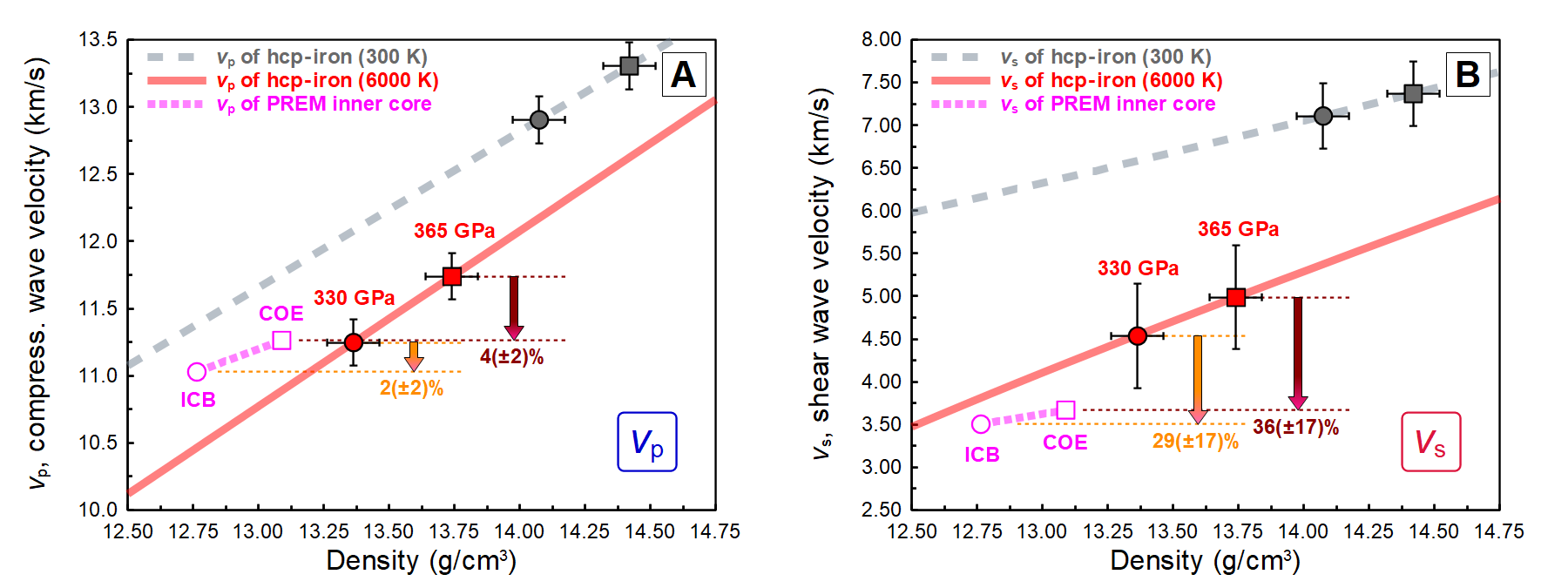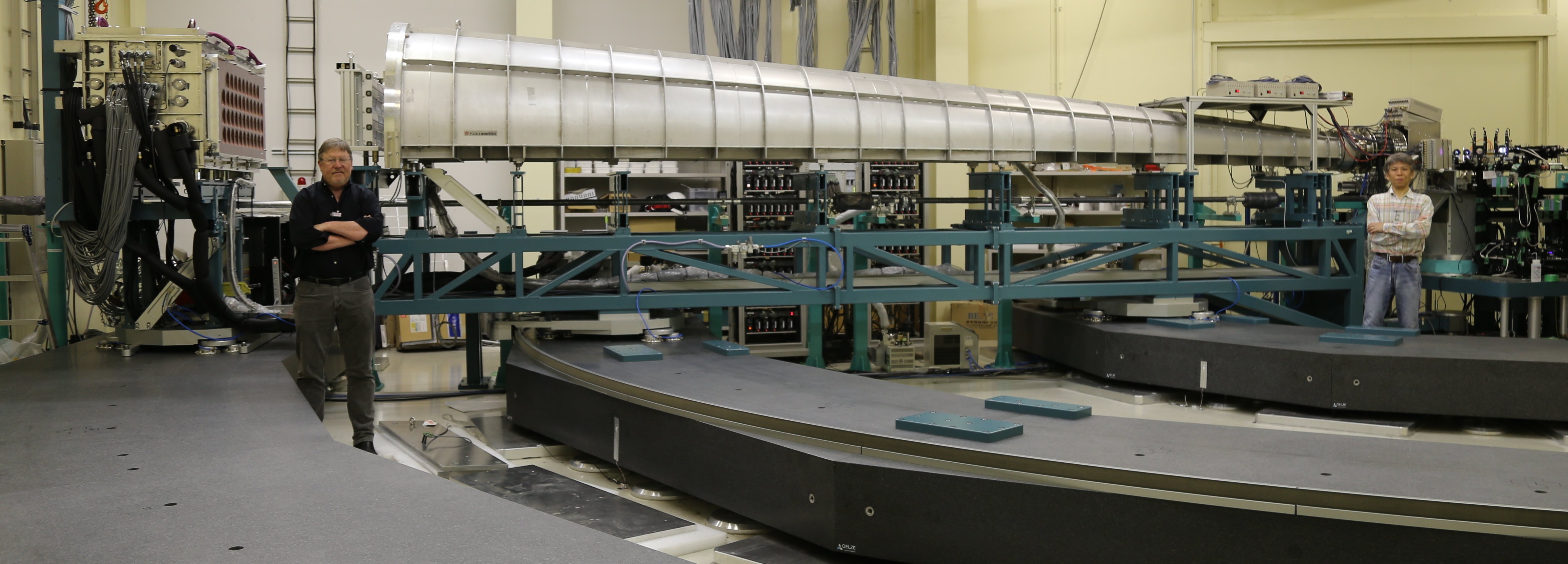NEWS
Diamonds and X-Rays Open a New Window into the Earth's Inner Core
A collaborative research group has succeeded, for the first time, in measuring the speed of sound of pure iron under pressures similar to the Earth's inner core boundary.
It may be surprising, but we do not have much information about the center of the planet that we live on. One can dig down a few kilometers, and volcanoes and plate tectonics can bring up material from depths of a few hundred km, but what lies beneath, down to the center of the Earth, some 6000 km beneath our feet, is not well understood.
It is generally accepted that the core some 3000 km below us is mostly iron: a sea of liquid iron, the outer core, around an inner core of solid iron. The best information we have is from tracking the progress of seismic waves from earthquakes, as they propagate through the planet. This tells us the density and the speed of sound. But those values do not exactly agree with what people expect for pure iron; there needs to be something else present in the core. What that material is, and how much of it there may be, are active areas of investigation as they have implications for understanding the present properties of the Earth and the evolution of the solar system.

The compressional velocity of pure iron at high pressure as determined in the present work (blue symbols) compared to the highest previous determination using these methods (open symbol) and to the known relation of the inner core determined from seismic observations (dashed red line with stars). ©Daijo Ikuta
Many research teams try to recreate the conditions of the center of the Earth in their laboratories. But this is difficult, requiring keeping materials under extreme pressure, millions of atmospheres, and extreme temperatures, similar to the surface of the sun, all while doing sensitive measurements.
The collaboration between Tohoku University, the RIKEN SPring-8 Center, Ehime University and the Japan Synchrotron Radiation Research Institute succeeded, for the first time, in measuring the speed of sound of pure iron under pressures similar to the Earth's inner core boundary, 330 GPa (the pressure if one supported 33,000 metric tons on a 1mm×1mm area).

Comparison of density‒velocity relations of iron at inner core conditions with Preliminary reference Earth model (PREM). The vp difference (A) and the vs difference (B) in the inner core. ©Daijo Ikuta
After years of work, the researchers were able to effectively combine diamond anvil cell technology - something used to generate high pressures but which requires considerable skill to achieve pressures comparable to the Earth's core - with an X-ray scattering technique known as inelastic X-ray scattering. This technique allows scientists to observe the atomic motions in materials using X-rays and is the only method for accurately measuring the sound velocity of metals under static compression in a diamond anvil cell. This was done at RIKEN's world-leading facility for inelastic X-ray scattering, the Quantum NanoDynamics Beamline at SPring-8 in Hyogo Prefecture.

BL43LXU, the RIKEN Quantum NanoDynamics Beamline at the RIKEN SPring-8 Center. ©Alfred Q. R. Baron
The researchers showed that the sound velocity of the inner core determined from seismological studies is 4±2% slower in compressional velocity and 36±17% slower in shear velocity than that of metallic iron.
Combining the new result with previous work suggests the Earth's core may be enriched in silicon and sulfur consistent with the existing outer core model with oxygen, as the growth of the inner core may have created a secular enrichment of oxygen in the outer core.
Details of the group's research were published in the journal Nature Communications on November 25, 2022.

The diamond anvil cell used in this experiment. (A) Symmetric Diamond Anvil Cell, (B) Schematic diagram of a diamond anvil. The orange circle is the area corresponding to (C, D) (C) Image of the top of the (stepped beveled) diamond anvil designed for IXS measurement at ultrahigh pressure, (D) Cross-section of the diamond anvil corresponding to (C). ©Daijo Ikuta
Publication Details:
Title: Sound velocity of hexagonal close-packed iron to the Earth's inner core pressure
Authors: Daijo Ikuta, Eiji Ohtani, Hiroshi Fukui, Takeshi Sakai, Daisuke Ishikawa, Alfred Q. R. Baron
Journal: Nature Communications
DOI: 10.1038/s41467-022-34789-2
Contact:
Eiji Ohtani (Profile)
Department of Earth and Planetary Materials Science, Graduate School of Science
Email: eohtani * tohoku.ac.jp (Replace * with @)
Posted on:November 28, 2022




